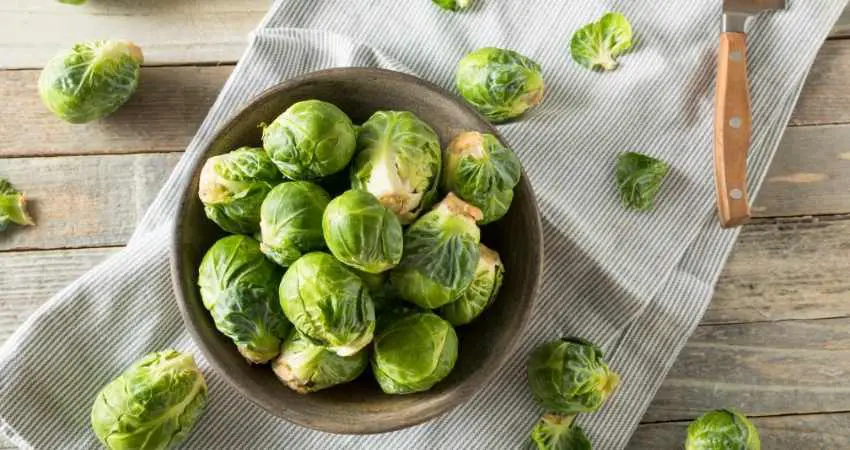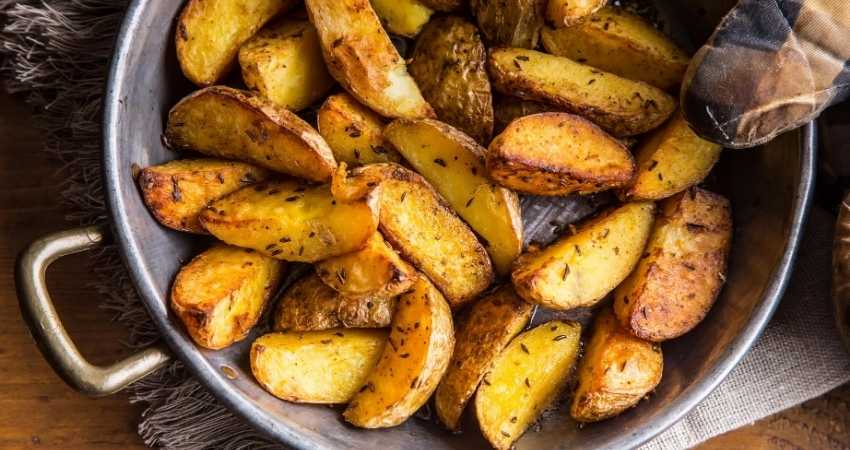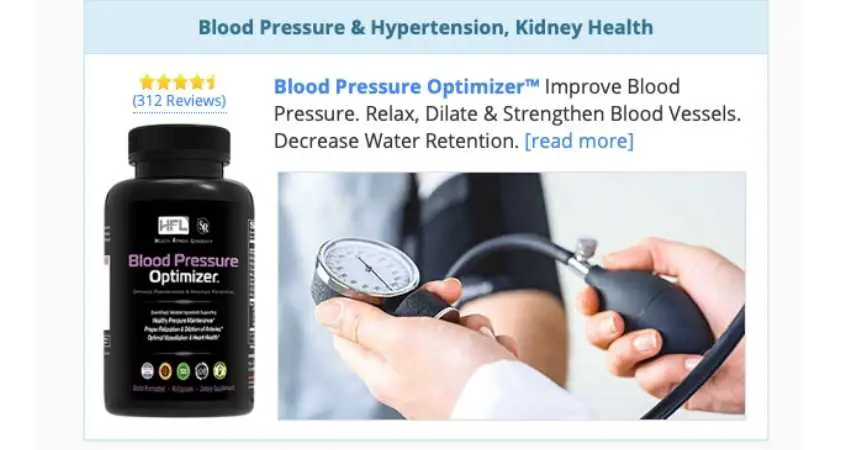It’s difficult to argue, pound for pound, vegetables might be the most nutritious food available. They’re nutrient dense and do not contain many calories. Some vegetables have been shown in studies to lower blood pressure. This leads to the question, what vegetables lower blood pressure?
The following vegetables help lower blood pressure:
- Red Beets
- Swiss Chard
- Bok Choy
- Collard Greens
- Brussel Sprouts
- Spinach
- Kale
- Sweet Potatoes
- Potatoes
- Broccoli
- Celery
All vegetables are beneficial but these 11 vegetables made the list for a compelling reason. Scientific research and studies have proven they, or their higher nutrient contents, have lowered blood pressure. If you’ve been bored with the same vegetables at dinner night after night, you may want to pick a new delicious alternative from this list.
BP TIP: I’ve also uncovered a simple way to lower BP by just breathing. It’s FDA approved and The American Heart Association gave it the thumbs up. It simply guides your breathing for you a few minutes a day which has been proven to lower blood pressure as shown in studies. You can check it out in the manufacturer’s website by clicking here.
Vegetables That Lower Blood Pressure
1. Red Beets
In 2018, researchers reviewed 11 different beet studies and their affect on blood pressure. They concluded beet root juice is an affordable way to help reduce it. In addition, it could reduce the risk of a cardiovascular event, like heart attack, and lessen the number of deaths from cardiovascular disease1.
What makes red beets so effective? They contain many different vitamins and minerals. They contain a good amount of potassium, magnesium, folate and Vitamin C which are all beneficial in lowering blood pressure. In addition, they are high in nitric oxide which opens up your blood vessels. 1 cup of red beets contains the following:
- Vitamin C – 11% of the RDI
- Folate – 37% of the RDI
- Potassium – 442 mg
- Manganese – 22% of the RDI
- Fiber – 15% of the RDI
- Magnesium – 31.3 mg
You may want to check out a BP supplement which features vitamin C, potassium, magnesium and B6 as its main ingredients, you can check it out in on their informational page, Blood Pressure Optimizer. Always check with your physician before taking any supplements.
2. Swiss Chard
Swiss chard, like beets, are high in nitrate. Dietary nitrate has been found to benefit blood vessels and reduce blood pressure2. Its high magnesium percentage benefits blood pressure by helping to relax blood vessels. In addition, Vitamin K has been shown to benefit blood vessel calcifications and help with kidney function3.
Swiss chard also made the list in my blog post of 24 Foods To Reduce Blood Pressure. 2 seeds also made that list and one of them you’ve probably never heard of. 1 cup of Swiss chard contains the following:
- Vitamin K – 374% of the RDI
- Vitamin A – 44% of the RDI
- Vitamin C – 18% of the RDI
- Magnesium – 29 mg
- Potassium – 136 mg
( Lower Your BP Naturally, In Only 30 Days Or Pay Nothing…Visit Website By Clicking Here Or Photo Above )
3. Bok Choy
This leafy green vegetable , also called, Chinese cabbage, provides half of the days recommended amount of Vitamin C in one cup. We already know how important this vitamin is for the immune system, but how about blood pressure? In one study, 29 different trials were studied involving blood pressure and vitamin C. Blood pressure was reduced by 3.84 mmHg for those who consumed 500 mg of vitamin C per day. In addition, those who had hypertension reduced it even more by 5 mmHg4.
Bok choy and swiss chard are two leafy greens often overlooked when people are picking lettuce for a salad. You may want to try some next time you’re shopping. In addition to vitamin C, it contains a large amount of vitamin A. 1 cup has the following ingredients:
- Vitamin A – 63% of the RDI
- Vitamin C – 52% of the RDI
- Vitamin K – 40% of the RDI
- Folate – 12% of the RDI
- Calcium – 7% of the RDI
4. Collard Greens
Collards are part of the cruciferous vegetable group. It’s full of antioxidants and is very high in Vitamin K. A recent study showed a slight decrease in systolic blood pressure after rats were given collards for 6 weeks. If you’re wondering how they check the pressure of rodents, they have a BP cuff that wraps around their tails5.
In addition, the DASH eating plan specifically mentions collards in their list of foods beneficial for lowering blood pressure6. 1 cup of collards contains:
- Vitamin A – 48% of the RDI
- Vitamin C – 21% of the RDI
- Vitamin K – 230% of the RDI
- Folate – 15% of the RDI
5. Brussel Sprouts
The Dash eating plan includes vegetables rich in potassium, magnesium and fiber. This cruciferous vegetable fits that description. They contain 342 mg of potassium which has been shown in numerous studies to help lower blood pressure. Research has shown people who consume 4,700 mg of potassium a day reduce systolic by 8 mmHg and diastolic by 4.1 mmHg7.
As you can see from this list, brussel sprouts are loaded with beneficial nutrients. 1 cup contains the following:
- Vitamin A – 13% of the RDI
- Vitamin C – 125% of the RDI
- Vitamin K – 195% of the RDI
- Vitamin B6 – 10% of the RDI
- Folate – 13% of the RDI
- Potassium – 342 mg
- Fiber – 13% of the RDI
- Magnesium – 5%

6. Spinach
Popeye the Sailor knew how beneficial spinach was for him. How can any vegetable list not include spinach? It contains both beneficial magnesium and potassium. In addition, it is rich in nitrate content. A study provided one group of people with spinach containing 845 mg of nitrate. The other group was given asparagus, a lower nitrate vegetable. Both groups reduced pressure, but the spinach group had a larger decrease in systolic and diastolic8.
Spinach also contains a good amount of Vitamin C and folate. 1 cup has the following:
- Vitamin A – 56% of the RDI
- Vitamin C – 14% of the RDI
- Vitamin K – 181% of the RDI
- Folate – 15% of the RDI
- Potassium – 167 mg
- Magnesium – 23 mg
7. Kale
Kale typically takes a backseat to spinach but maybe it should move into the front. Kale contains more Vitamin C and just as many other nutrients. In a study of 84 people with hypertension, both systolic and diastolic pressure were significantly reduced. Participants were given 10 ounces of kale juice a day for six weeks. Systolic decreased by approximately 5% and diastolic 3.5%9.
1 cup of kale contains the following nutrients:
- Vitamin A – 206% of the RDI
- Vitamin C – 134% of the RDI
- Vitamin K – 684% of the RDI
- Potassium – 299 mg
- Magnesium – 22.8 mg
8. Sweet Potatoes
I knew there was a reason why I started to buy these in addition to regular. After checking the nutrients for this article, I was quickly reminded. Besides the taste, they contain a ton of potassium and Vitamin A. Potatoes are another vegetable listed in the Dash diet plan. One of the reasons why potassium is effective for lowering blood pressure is how it helps get rid of excess sodium. This keeps pressure lower by reducing the amount of stored fluid10.
1 cup contains the following:
- Vitamin A – 377% of the RDI
- Vitamin B6 – 14% of the RDI
- Potassium – 448 mg
- Manganese – 17% of the RDI
- Magnesium – 33.2 mg
- Fiber – 16% of the RDI
9. Potatoes
It’s hard to decide between the regular or sweet, so I routinely switch from one to the other to avoid boredom. I’ll sometimes mix the two together. Regular potatoes have more potassium per cup than sweet. In addition, they have a lot of magnesium and vitamin C.
1 cup of potatoes contains the following nutrients:
- Vitamin C – 50% of the RDI
- Vitamin B6 – 22% of the RDI
- Potassium – 636 mg
- Magnesium – 34.6 mg
- Fiber – 14% of the RDI

10. Broccoli
It’s funny because when I was young I didn’t like broccoli at all. Now, I can’t get enough and crave them along side a nice cod or salmon dinner. In one study, 40 people with high blood pressure consumed 10 g of dried broccoli sprouts daily. The participants showed a decrease of 9 mmHg systolic after four weeks11.
What makes broccoli so effective are the high levels of potassium, vitamin C and folate. 1 cup contains:
- Vitamin A – 11% of the RDI
- Vitamin C – 135% of the RDI
- Vitamin K – 116% of the RDI
- Folate – 14% of the RDI
- Potassium – 288 mg
11. Celery
It’s made mostly of water but contains a various number of nutrients beneficial for your blood pressure. In one study participants were given celery extract for six weeks. After the 6th week, systolic was lowered 8.2 mmHg and diastolic by 8.5 mmHg12.
Celery and its seeds contain phytonutrients that have potent anti-inflammatory and antioxidant properties. In addition, it’s a good source of potassium. 1 cup contains the following:
- Potassium – 263 mg
- Vitamin K – 37% of the RDI
- Folate – 9% of the RDI
- Vitamin A – 9% of the RDI
Conclusion
If you’re looking to maintain a healthy blood pressure or bring your readings down, you may want to consider the vegetables above. None of them are considered exotic or hard to find. They are all easily available in any supermarket and the same section. In addition to blood pressure, people who eat vegetables as part of their overall diet have a reduced risk of some chronic diseases.
Next To Read
Now that you know what vegetables lower blood pressure, what about fruits? One fruit lowered blood pressure by 18 mmHg! You can read about it in my blog post,
Fruits That Lower Your Blood Pressure
Related Question
Are beans considered vegetables? Beans are not vegetables. They are legumes which are plants that produce a pod with seeds inside. The most common legumes are:
- Soybeans
- Lentils
- Peas
- Chickpeas
- Beans
- Edamame
Read More Food Blood Pressure Articles
Best Fruit Juice For High Blood Pressure
35 Foods To help Reduce Blood Pressure (Proven By Science)
Best Vegetable Juice For High Blood Pressure
- National Center for Biotechnology Information: Dietary Nitrate from Beetroot Juice for Hypertension: A Systematic Review [↩]
- National Center for Biotechnology Information: Vascular effects of dietary nitrate (as found in green leafy vegetables and beetroot) via the nitrate-nitrite-nitric oxide pathway [↩]
- National Center for Biotechnology Information: The health benefits of vitamin K [↩]
- John Hopkin’s Medicine: Big Doses of Vitamin C May Lower Blood Pressure [↩]
- National Center for Biotechnology Information: Influence of Green Leafy Vegetables in Diets [↩]
- National Center for Biotechnology Information: Your Guide To Lowering Your Blood Pressure With Dash [↩]
- National Center for Biotechnology Information: The importance of potassium in managing hypertension [↩]
- National Center for Biotechnology Information: Effect of Spinach, a High Dietary Nitrate Source, on Arterial Stiffness and related Hemodynamic Measures [↩]
- National Center for Biotechnology Information: The effect of glutathione S-transferase M1 and T1 polymorphisms on blood pressure [↩]
- National Institutes of Health: Potassium [↩]
- National Center of Biotechnology Information: Ingestion of broccoli sprouts does not improve endothelial function in humans with hypertension [↩]
- Cleveland Clinic: Celery May Help Bring Your High Blood Pressure Down [↩]

